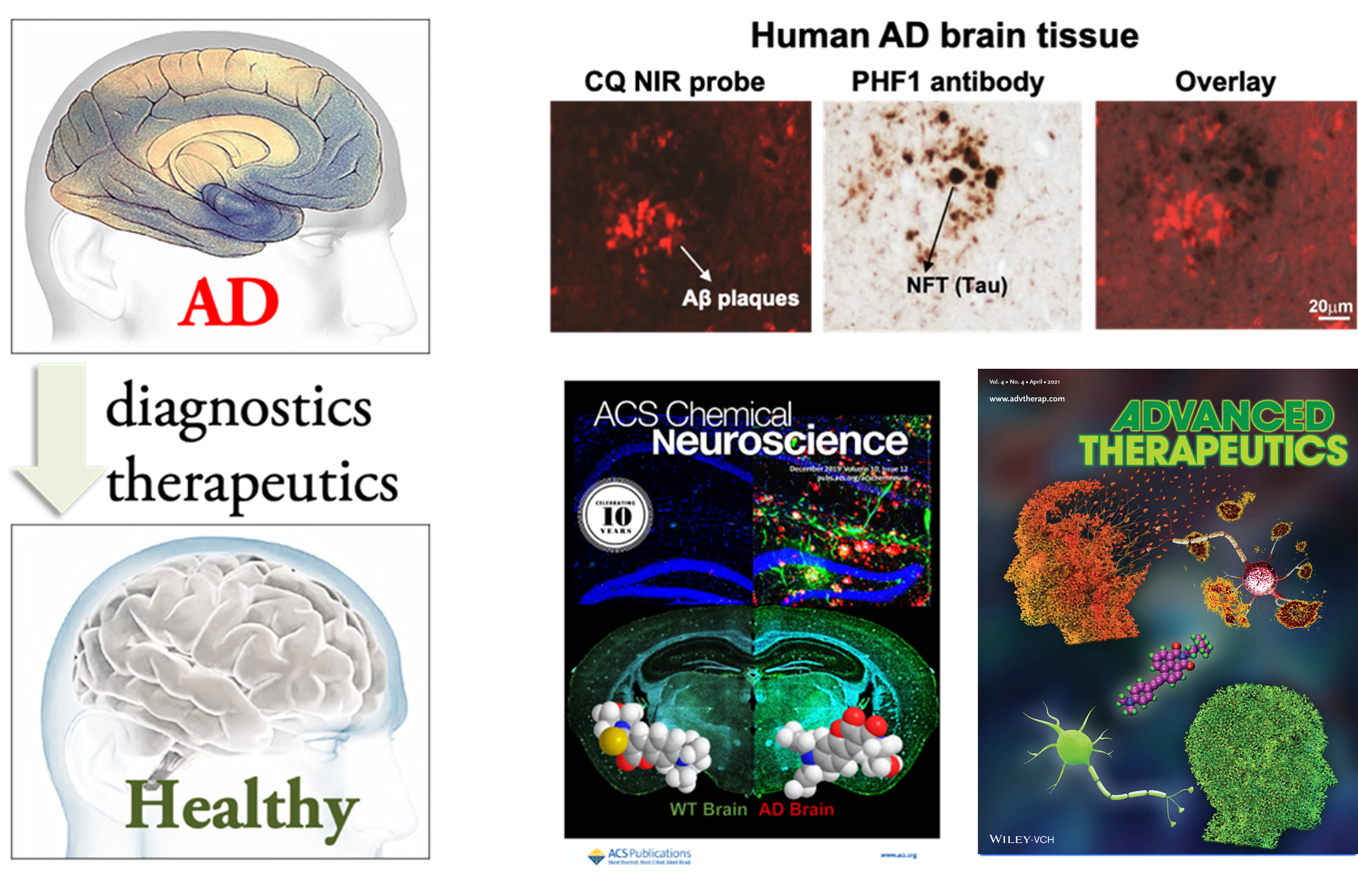We are working on novel concepts and research themes in basic and applied chemistry with translational value to solve
problems related to human health and directly impact society.
Alzheimer’s disease (AD) is a major neurodegenerative disease with currently no reliable diagnosis
or cure. We have established unique multifunctional/multipronged strategies to develop potential
diagnostic and therapeutic candidates and methods to tackle Alzheimer’s disease (AD). Our lab
has established selective detection of AD (diagnosis) and distinguishing it from other neurodegenerative
diseases. In a unique strategy, our lab has developed a range of molecular tools to assess biometals, ROS,
oxidative stress and other core and indirect biomarkers for possible multiplexed and multimodal detection of AD.
With the persistent effort of over 10 years, a novel drug candidate (TGR63) is discovered for the treatment of
AD(therapy), which is ready for clinical studies with a pharmaceutical company.

Our group is studying the relationship of AD with cancer and diabetes. This interest in the inverse relationship
between AD and cancer resulted in the discovery of a potential theranostic (diagnostic
therapy) drug candidate for lung cancer, one of the difficult cancer types to diagnose and
treat. Many of our laboratory inventions are being commercialized through a startup VNIR Biotechnologies Pvt.
Ltd or licensed to develop bioimaging, point-of-care diagnostics and therapeutics.
Molecular architectonics, a state-of-the-art innovation and new research theme, has emerged from our
group to integrate the realms of molecules, nano and microscale architectures into functional applications in
bioelectronics, homochirality, understanding protein folding, high-strength biomaterials, self-cleaning,
biosensors, drug delivery, would-healing, stem cells to neuronal differentiation, and tissue engineering.

Inspired by functional amyloids, the scheme of molecular architectonics is conceived as the reductionist molecular
strategy to design and develop functional biomimetic architectures. Amino acids, peptides, nucleobases, sugars
and lipids with built-in information needed for molecular recognition (minute structural-mutations and
chirality) serve as the functional components in the scheme of molecular architectonics. The scheme of molecular
architectonics guided the conceptualization of templated DNA nanotechnology (functional DNA
nanoarchitectonics) to overcome the limitations of classical DNA nanotechnology.
Our group is at the forefront of upcycling cyclic dipeptide (CDP) for the design and production of
synthetic silk mimics. Silk-derived formulations are developed for sustained
in vivo insulin delivery, diabetic-wound healing, skeletal muscle and neuronal (stem cells-based) tissue
engineering, and these inventions add value to the sericulture industry/farmers.
